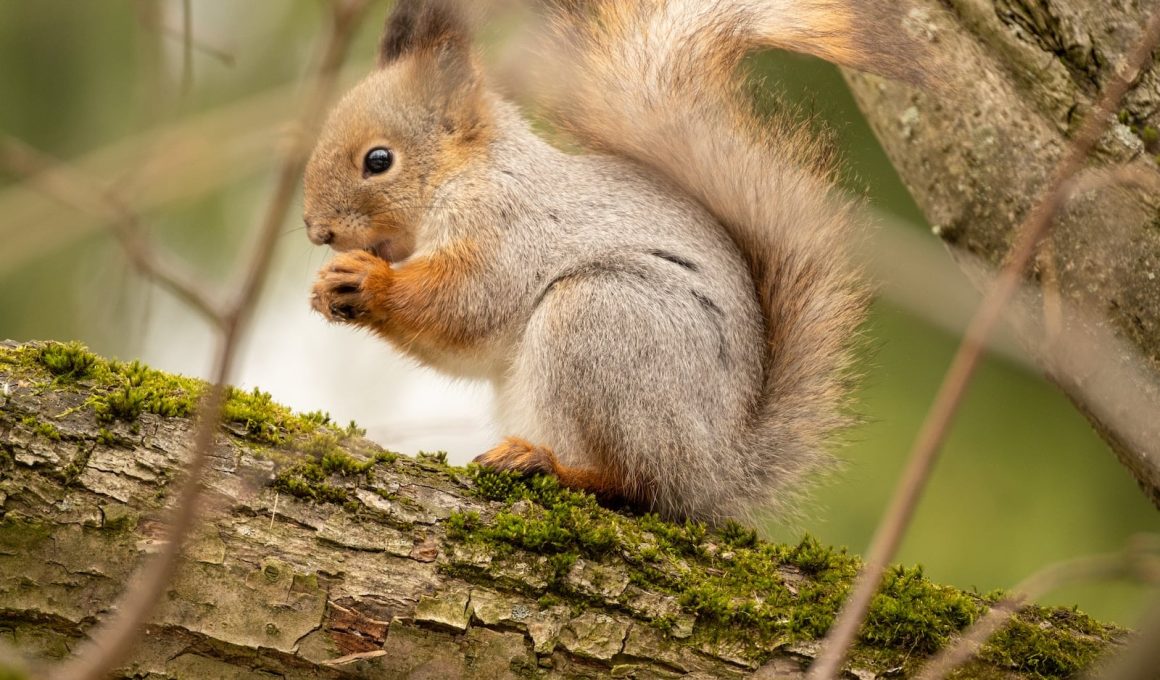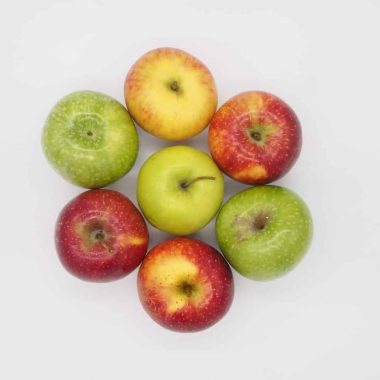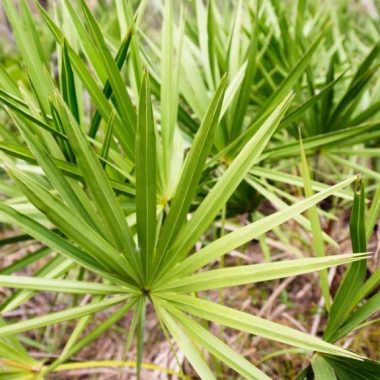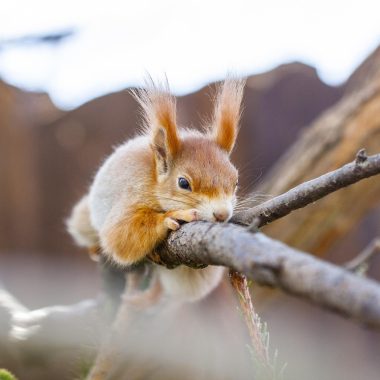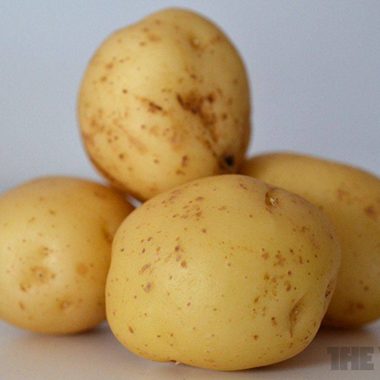If you often have to replace damaged plants and flowers in your yard, plants that repel squirrels are a great addition.
Unfortunately, these rodents will consume your seedlings, plants, herbs, vegetables, flowers, and bulbs since they regard virtually anything as food, ruining your garden.
If squirrels have been seen in your neighborhood, it might be wise to choose your plants with their likes and dislikes in mind.
Remember that a squirrel will feed on various plants and may cause havoc in your spring flower gardens if hungry.
They like digging up recently planted bulbs. To protect their winter food supplies, squirrels collect and gather as much as possible.
Fortunately, there are a few plant species that these animals detest. These may be placed in key garden areas to deter foragers from your yard.
Consider strengthening your garden’s defenses by planting the following plants if you’ve noticed missing crops, stolen fruits, disturbed soil, and empty bird feeders.
Below is a list of plants that repel squirrels.
1. Hyacinth
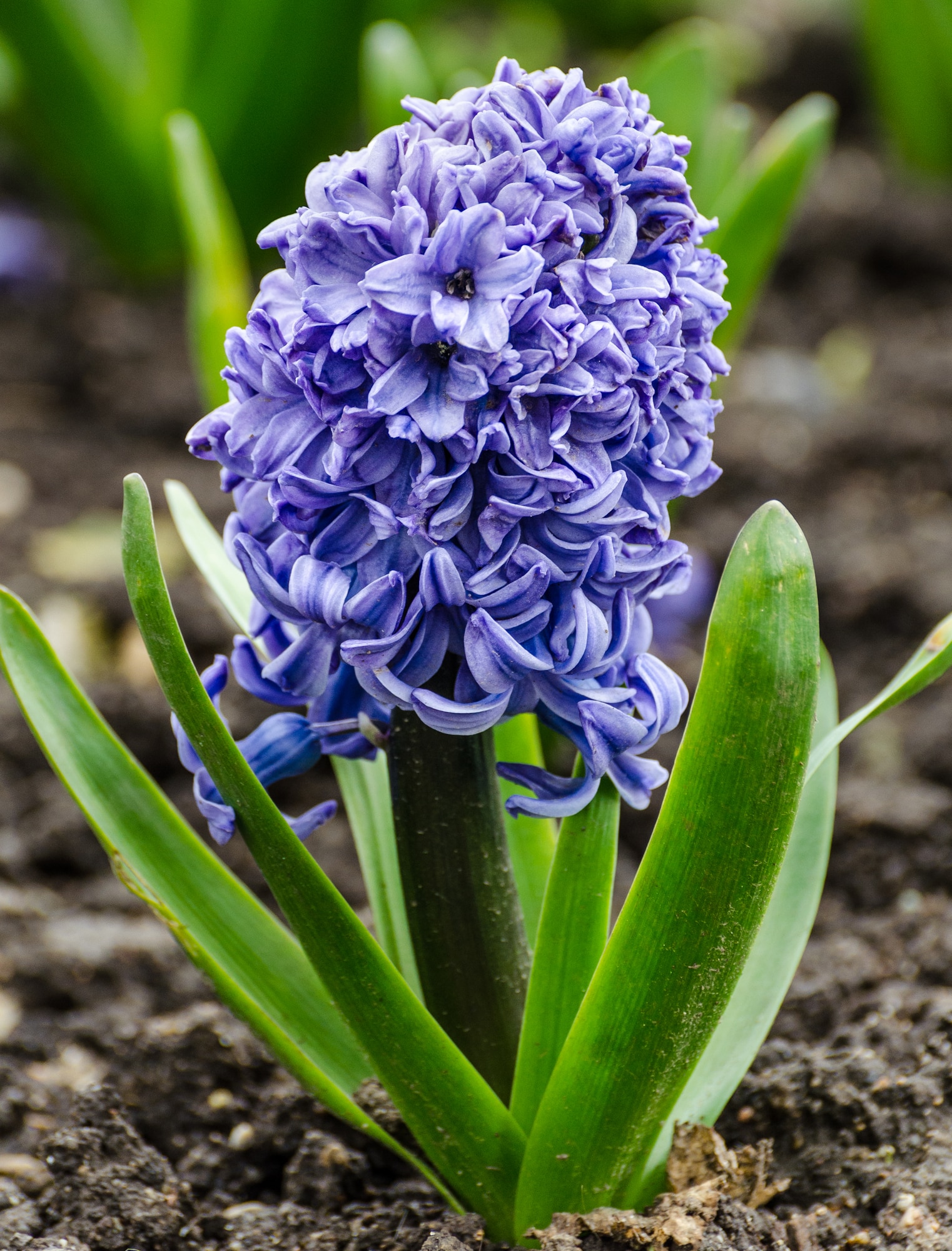
Hyacinth is one of the fragrant plants that repel squirrels and appeal to humans while deterring them.
These bulbs not only grow a stalk of exquisite flowers but also have a strong, perfume-like aroma that is detectable from a great distance.
While most people find this scent to be pleasant, squirrels do not, it seems.
This can be because the strong fragrance overwhelms their senses or prevents them from smelling surrounding predators.
The oxalic acid found in hyacinth bulbs is a poison that harms most animals, including people, squirrels, dogs, and cats.
Even touching the bulbs may cause skin rashes in people who are vulnerable since they are so irritating.
Due to this, squirrels will go out of their way to avoid digging around hyacinth bulbs and flowers.
2. Geranium
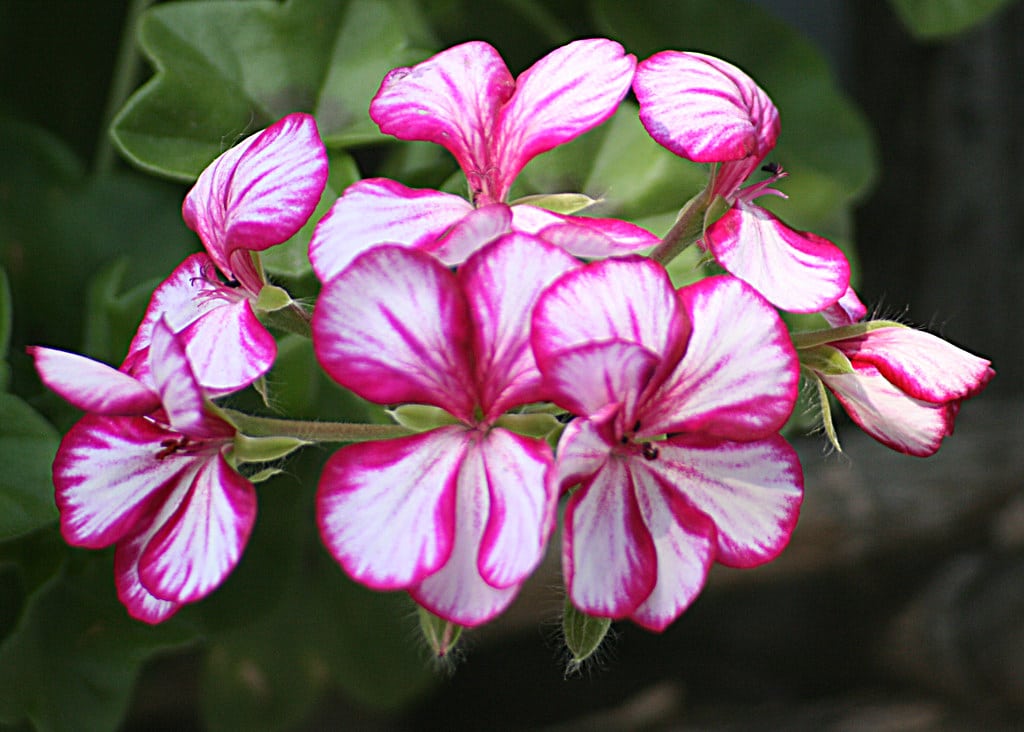
Geranium is a rather diverse genus of plants that repel squirrels, known for their five-petalled, clearly veined flowers.
The most common varieties are greenhouse cultivars, which come in various colors, from blue to red.
Geraniums come in two varieties: “true” or “hardy” geraniums falling within the Geranium genus.
Since they are distant relatives, pelargonium species may be called “zonal” geraniums. Unsurprisingly, squirrels are not deterred by the color of geranium flowers.
It’s the scent that their oils produce. The scent of geraniums is often described as being either rosy or lemony, with warm green, earthy, or peppery overtones.
Since pelargoniums have a stronger fragrance, they are often used in bath products and fragrances instead of rose oils.
Geraniums may be cultivated in pots and placed in bare spots to provide color and texture.
Planting many branches of various types next to one another helps highlight the diversity in their blooming characteristics.
Almost any place in the landscape, including your front porch or a windowsill, where they may get early light and afternoon shade, is a good place to put these pots.
3. Peppermint
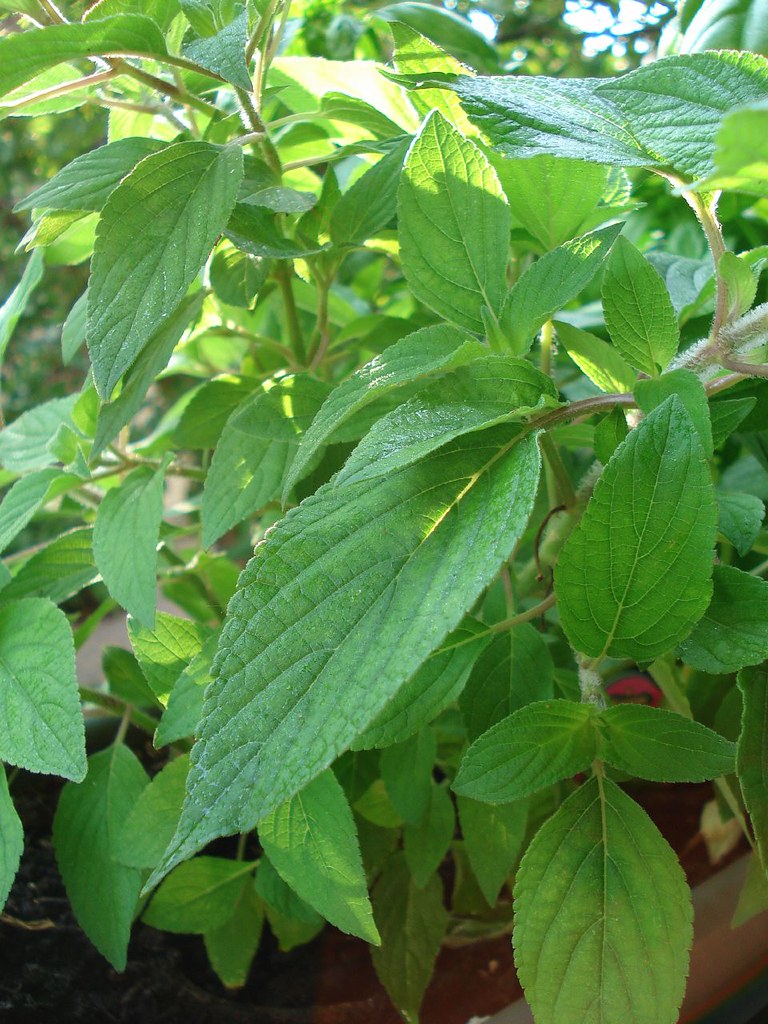
This hybrid mint plant has become a traditional ingredient in several tasty recipes, winning worldwide.
Their parent species are Watermint (Mentha aquatica) and spearmint (Menta spicata).
It is an excellent addition to any herb and vegetable garden since it grows quickly and has a powerful scent many potential grazers find unattractive.
Even cotton balls soaked in peppermint extract may be used to repel squirrels since the plant’s scent comes from its essential oil.
These may be hung from bushes around the garden, particularly where new bulbs need protection against pests.
Additionally, peppermint may be transplanted often next to vulnerable seedlings when grown in pots. In ideal circumstances, peppermint can spread swiftly.
Runners below the earth’s surface may build a vast network in consistently wet, well-drained, and rich soil, quickly leading to an invasive colony.
4. Allium
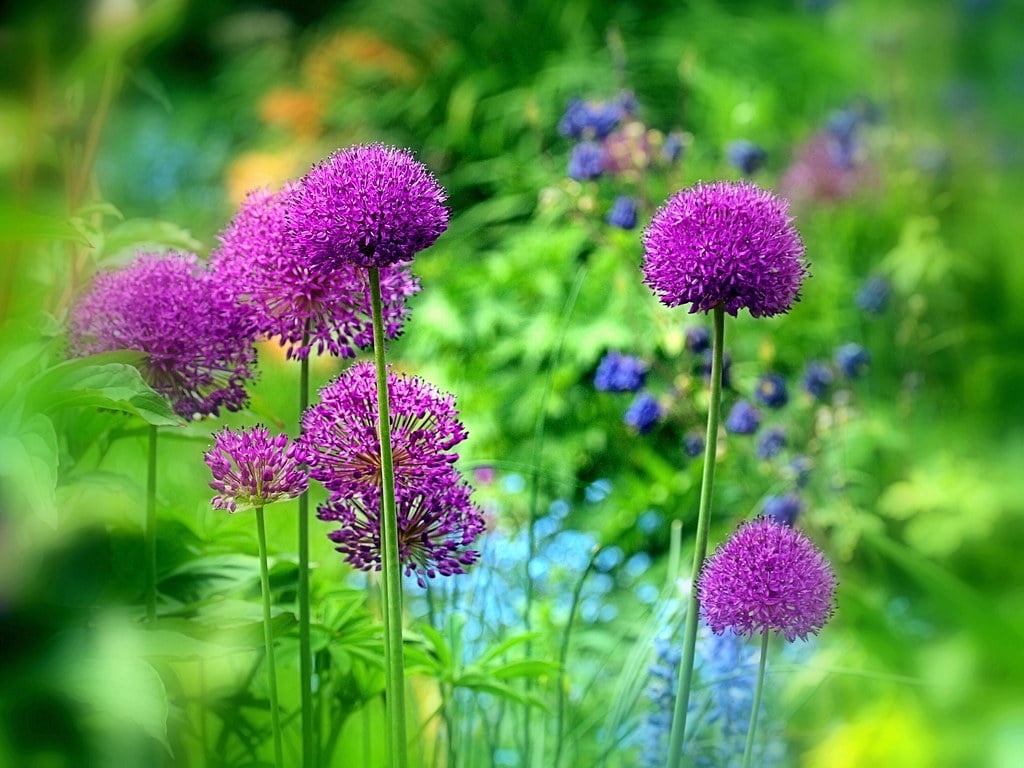
This beautiful plant genus, including onions, garlic, leeks, and scallions, is well-known for its culinary use.
While not everyone finds their flavors appetizing, finding someone who does not respond emotionally to them would be difficult.
Not surprisingly, alliums are effective plants that repel squirrels due to their offensive scent characteristics.
Alliums may be planted around areas of tomatoes, carrots, and other delicious fruits that squirrels like since these root crops thrive in vegetable gardens.
They will stop squirrels since even little damage to their leaves and bulbs, let alone a powerful wind blow, may cause the discharge of an overwhelming scent wave.
They receive a major portion of the chemical molecules that give them their smells from a group of cysteine sulfoxides.
Depending on the substrate’s sulfur concentration, the creation of these may differ.
Alliums may lose their pungent flavor under regulated circumstances with no sulfur content.
Ensure your alliums are planted in nutrient-rich soil if you want them to be effective repellents.
5. Bougainvillea

The vibrant bracts of bougainvillea vines, which sometimes have variegated leaves and appear in colors of yellow, purple, pink, and red, may also be cultivated as shrubs.
The plant’s true flowers, which are small white flowers, are concealed by these vibrant bracts.
This is one of the plants that repel squirrels despite having a pleasant scent.
It requires frequent watering, particularly while the plant is blooming, and thrives in full sun, but it may tolerate light shade.
Bougainvillea vines are typically planted against walls, trellises, and other supporting structures.
However, they don’t need a supporting structure to spread like a ground cover. In this situation, since they contain thorns, they should be kept away from busy areas.
Squirrels won’t like their taste, so that you may cultivate them near solidago or goldenrod flowers.
If you reside in a cold region, you might consider growing these plants in indoor containers since they are sensitive to the cold.
6. Marigold

Marigolds are grown for commercial purposes all over the world. They are renowned for their vivid yellow to orange flowers, with certain species having petals with very strong scents.
The three most often used species are the signet marigold (T. tenuifolia), Mexican marigold (T. erecta), and French marigold (T. patula). Marigolds are a key ornament at many celebrations across Central and South America.
They may also be used to add color and intricacy to various foods. It should be mentioned that their roots create thiophenes, which are sulfur-containing chemicals with antibacterial properties.
These might support the plant’s defense against worms and other pests.
Nevertheless, the scent that marigold flowers exude is probably what scares squirrels away.
Annual marigold species live for less than a year and are the most common types. The shoots start to die off after their flowers have finished blooming.
Despite this, they have an amazing potential for self-seeding and will quickly germinate the next year if the environment is favorable.
Remember that certain species may expand so rapidly that they become invasive in areas not part of their natural habitat.
7. Goldenrod

Goldenrods are common plants, with hundreds of species flourishing in meadows, grasslands, farms, and swamps.
They must be cultivated carefully outside the Americas since they may spread swiftly and become invasive species.
They are often falsely suspected of being allergy producers. Ambrosia (ragweed), which blooms around the same time as goldenrods, is often the actual offender.
Solidago species, including S. canadensis, S. rigida, S. caesia, S. virgaurea, and S. Riddell, are often grown in gardens.
Their leaves may be used to make herbal tea that can be used to treat rheumatism, inflammation, and muscular spasms.
Among the many cultivars and hybrids of goldenrod, you are certain to discover the ideal plant for your garden.
Many pollinators, including bees and butterflies, are drawn to the yellow blossoms. Goldenrod’s flavor, rather than its scent, serves as a squirrel deterrent.
As a result, these plants may not be as efficient in repelling squirrels who aren’t familiar with their unpleasant flavor.
The leaves of goldenrod need to be bruised or crushed to release anise or licorice-like aroma. This is undoubtedly one of the best plants that repel squirrels.
8. Lily of the Valley
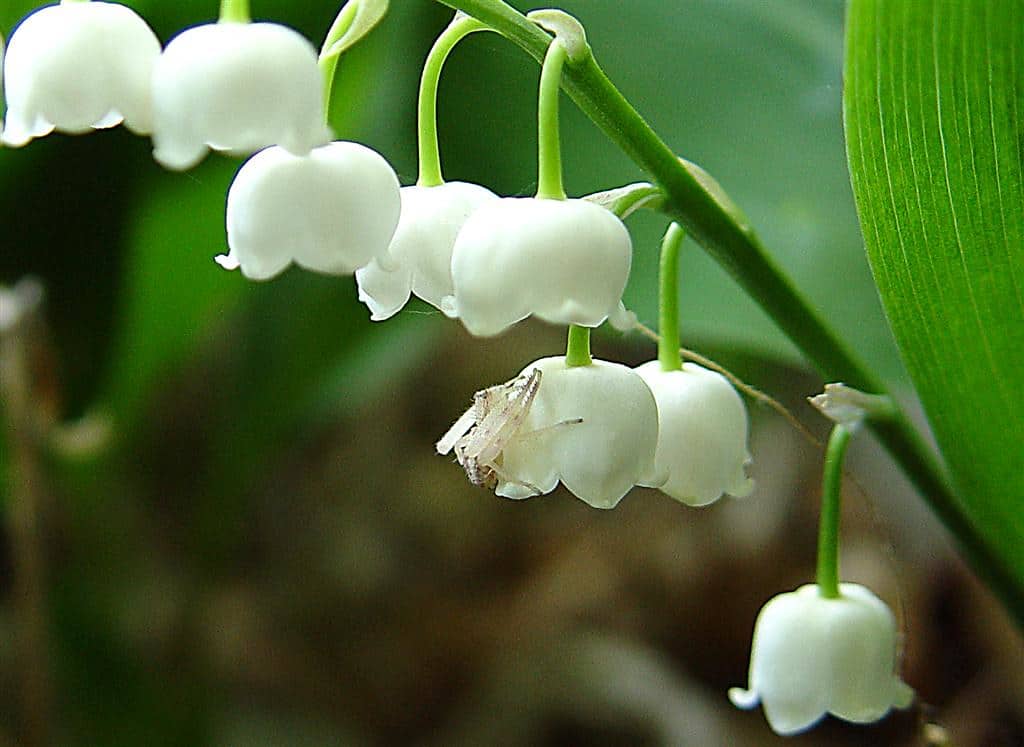
The Lily of the Valley is one of the ideal plants that repel squirrels while also adding some delicate beauty to your garden. These stunning bell-shaped, white spring flowers dangle from delicate stems above lush green leaves.
They both smell similarly delicate, something between jasmine and freshly laundered clothes.
Many are surprised to hear that these delicate flowers are powerful enough to repel squirrels from passing through them due to their scent, which is overwhelming.
This is probably due to the delicate clues regarding the plant’s chemical composition in that scent.
Be aware that these flowers are poisonous. Although they may be alluring to humans, squirrels feel differently.
When foraging, these animals won’t take the chance of digging close to them and will stay away from them and the nearby vegetation.
9. Daffodil

These beautiful perennial bulbs bloom from late winter to early spring and then go dormant for the summer.
Daffodils put among your garden’s various species that bloom in the early spring may provide some shelter from squirrels.
The flowers should be placed close together to strengthen their powerful scent since it might be an effective deterrent.
Daffodils may go well with any garden or house because they adapt to various climatic situations.
Placing bulbs in rows next to structural boundaries or clusters at the foot of trees is possible.
They may also be used to fill in the spaces between bushes with summer appeal. In this manner, the garden’s year-round color and growth may be preserved.
Dormant daffodil bulbs may repel squirrels from foraging widely, even in the summer.
When planted near the bulbs of other flowers that rats like to eat, they may act as a natural repellant. Daffodils have the added benefit of deterring deer.
10. Common Snowdrop
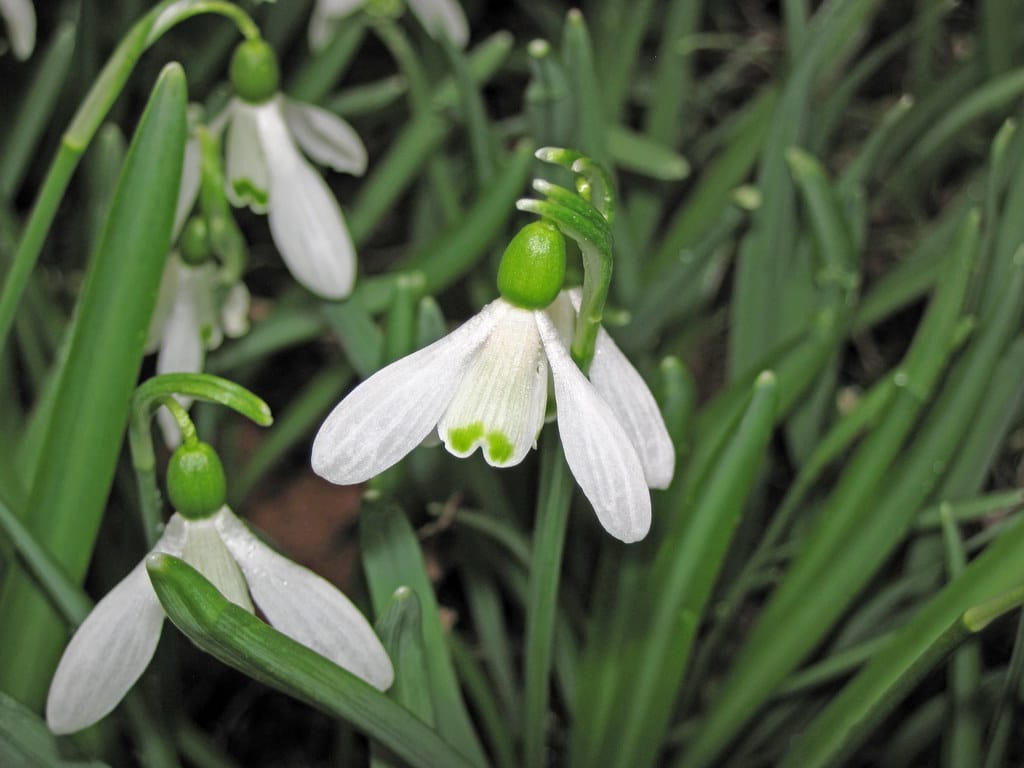
This perennial plant is well known for its little, solitary flowers.
The flowers are so pure white and clean that they resemble tufts of snow and seem to sway in light breezes.
They emerge from short, 10-inch (25 cm) dark green, arching stalks.
This is one of the plants that repel squirrels that is simple to naturalize and capable of multiplying independently.
Regarding pests, particularly squirrels, it is quite resistant and takes minimal upkeep. Shoots come out of bulbs on the common snowdrop.
They may be planted densely to create a clustered look of blooming in late winter to early spring.
Clusters appear best in border plantings with exposure to full sun to moderate shade, adjacent to ponds, at the foot of tall trees, and in rock gardens.
At the end of spring, the foliage does begin to fade back. Alongside your snowdrops, think about growing plants with summer appeal.
Grazers often avoid this plant because of its somewhat poisonous characteristics.
Although its leaves and stems do contain phenanthridine alkaloids, the bulbs are where they are most concentrated.
Anytime your dogs approach areas with snowdrops, keep an eye on them. Ingestion symptoms include nausea, vomiting, dizziness, and seizures.
11. Garlic

Typically, garlic is cultivated from a bulb in the autumn and harvested in the spring or summer.
It may, however, be grown in the spring in warmer climates.
Garlic should be grown in a sunny area with loose, well-draining soil so that the bulbs may expand.
To prevent competing for nutrients, avoid planting it in an area where alliums or any onions have been growing for the previous three years.
Squirrels and other rodents avoid your garden in search of food because the smell of garlic repels them so much.
Other surrounding plants, flowers, and veggies are protected from squirrel harm by this aroma’s ability to disguise them. This is one of the best plants that repel squirrels.
Even if you cannot cultivate garlic in your garden, you may still defend your plants from animal grazers by making a natural squirrel-repellent spray of garlic, pepper flakes, and apple cider vinegar.
12. Mint

Squirrels are known to loathe the scent of mint. This essential oil is often used to wrap cotton balls and spray solutions to prevent these rodents from chewing on vegetables.
Try growing mint instead for a more robust defense that will make the bees in your yard extremely happy.
There are several varieties of mint, including spearmint, chocolate mint, lemon balm, and peppermint.
All are effective in repelling squirrels by offending their sensitive noses. Furthermore, they all produce small pink, purple, or white flowers that delight pollinators.
However, mint is a plant that grows rapidly, so use caution.
If given the appropriate circumstances and enough space, mint plants can take over your backyard.
If you despise squirrels, this is ideal, but it’s not the best situation if you want to cultivate other plants.
Keep it in pots or beds with sharp edges to confine your mind.
13. Snake’s Head Fritillary
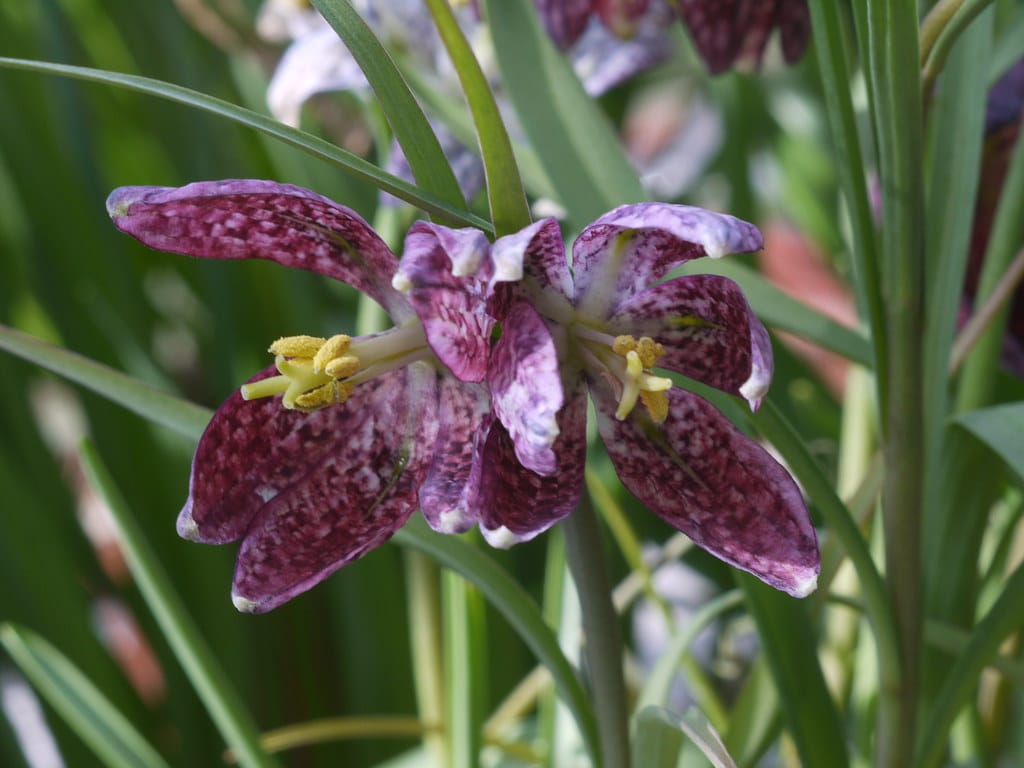
The snake’s head fritillary may draw the attention of any careful observer with its unusual and morphologically intriguing flowers.
The petal design of this magnificent species, which resembles a checkerboard or snake, makes it stand out.
The flowers, from a distance, seem like the heads of a snake, particularly when they are angled downward.
The branches of F. meleagris develop from bulbs, much like many other plants that repel squirrels.
Even while the plant’s resemblance to a snake might frighten an unwary squirrel, the smell turns them away. A horticulturist has compared the scent to that of a fox.
Additionally, this genus includes poisonous substances, including Imperialine and Tulipalin A.
Consumption may result in serious digestive system issues and possibly cardiac arrest.
Dermatitis may result from physical contact with certain substances.
As long as you know its chemical characteristics, a snake’s head fritillary may be safe to keep in a garden.
Be careful to grow it where domestic animals would have difficulty accessing it.
It should be positioned in corridors where wild animals could enter to make it an effective squirrel repellant.
Ensure the bulbs are grown on a substrate that drains effectively yet is often wet.
14. Cayenne Pepper
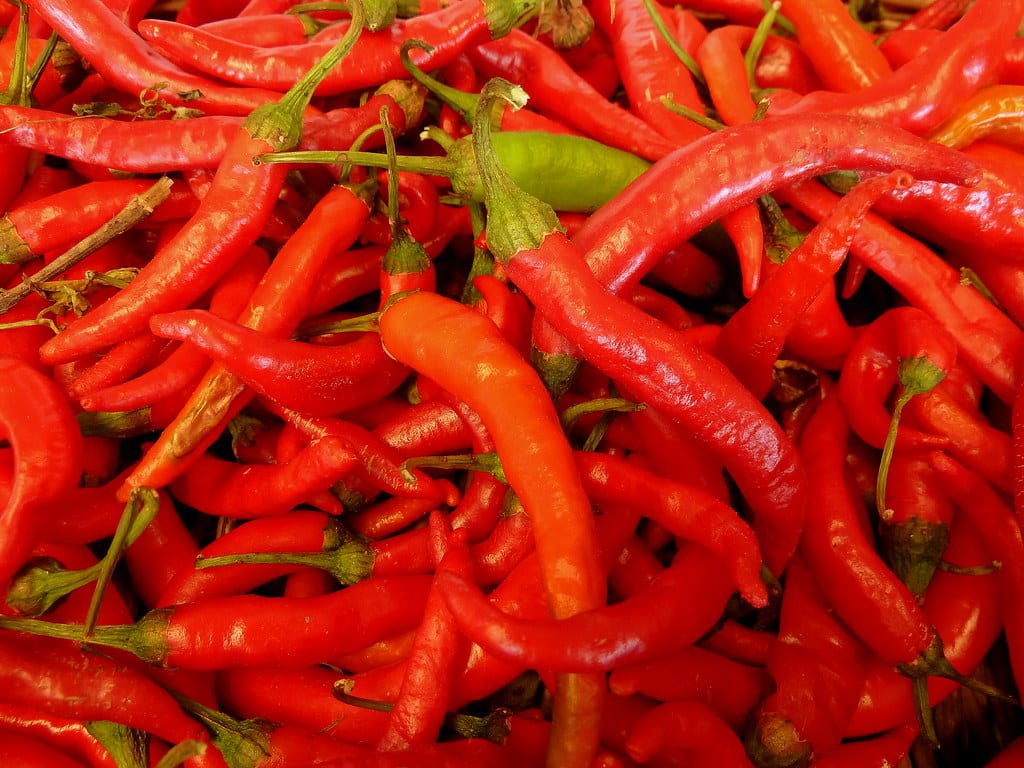
These spicily hot peppers won’t let you down if you’re searching for strong plants that repel squirrels out of your garden.
This bushy plant is a species member that includes bell peppers and jalapenos.
It has white flowers that develop into glossy, wrinkled, crimson fruits that are medium-heated in nature and have a wrinkly texture.
All plant portions are poisonous to humans and may trigger allergic responses because they contain capsaicin-related chemicals.
This perennial should be planted in the spring since it is sensitive to frost.
It should be grown in a sunny area with soil that drains well, away from other plants that might shade it.
Some varieties require propping to promote their development since they produce a lot of fruit.
You should avoid overwatering since the plant will suffer, and the soil should be rich in organic matter.
15. Bleeding Heart
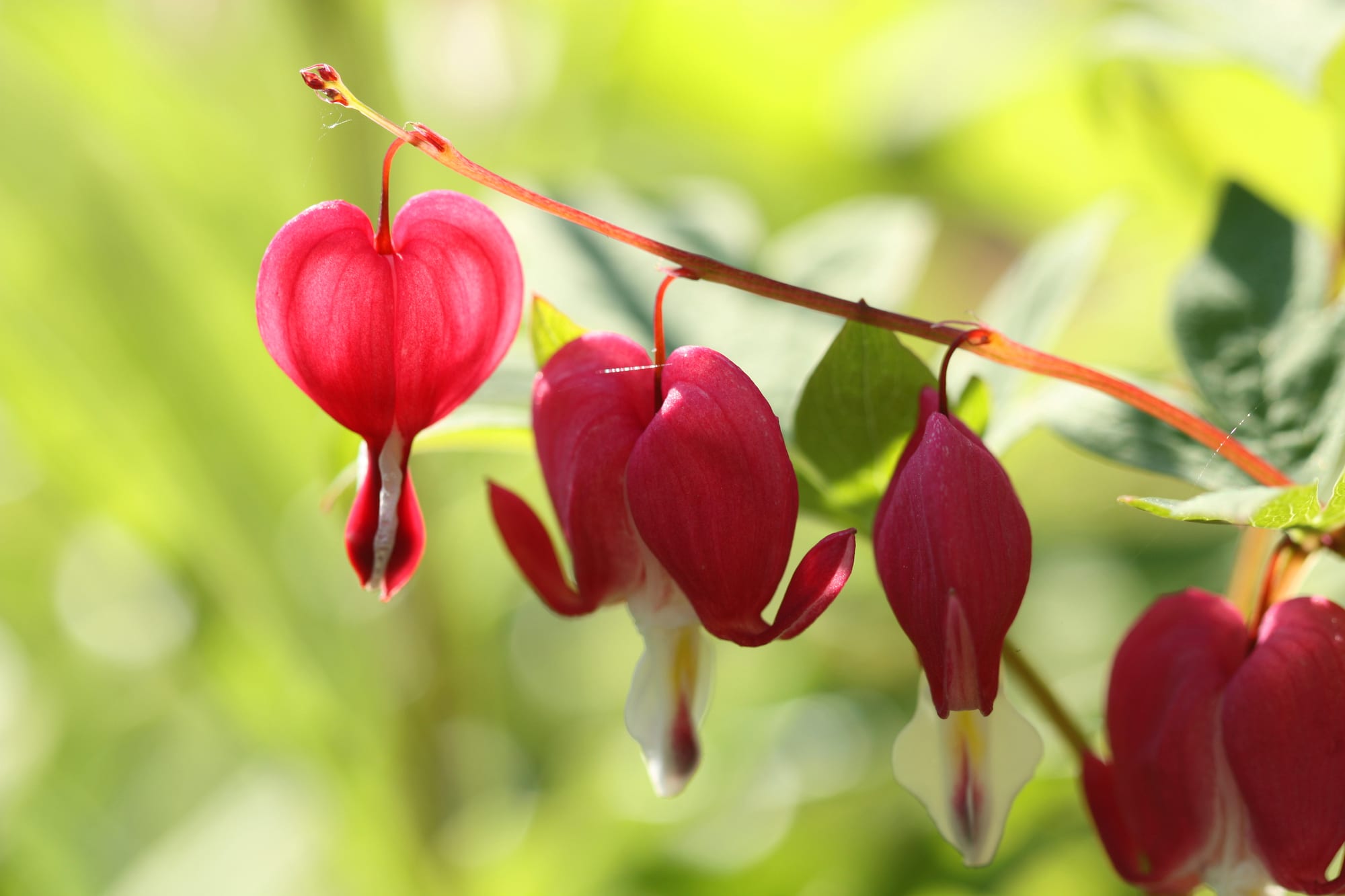
Although this plant makes a lovely addition to your environment, squirrels won’t be drawn to the leaves or the flowers and eat them.
Additionally, they contain alkaloids, which turn them into plants that repel squirrels.
Pink, red, and white flowers are produced by these woodland plants that prefer shade; they first emerge in the spring and then vanish in the scorching summer.
Either in the following spring or the autumn, they sprout again.
These plants grow slowly, reaching their maximum height sixty days after planting.
They harm people and pets, so take caution when you plant them. Heat sensitivity makes it more difficult to cultivate this plant in hotter areas.
However, once it is formed, it will be simple to maintain. It does not tolerate damp or dry soil and favors humus-rich, well-draining soil.
Fertilizing won’t be essential if your soil is already rich in organic matter.
